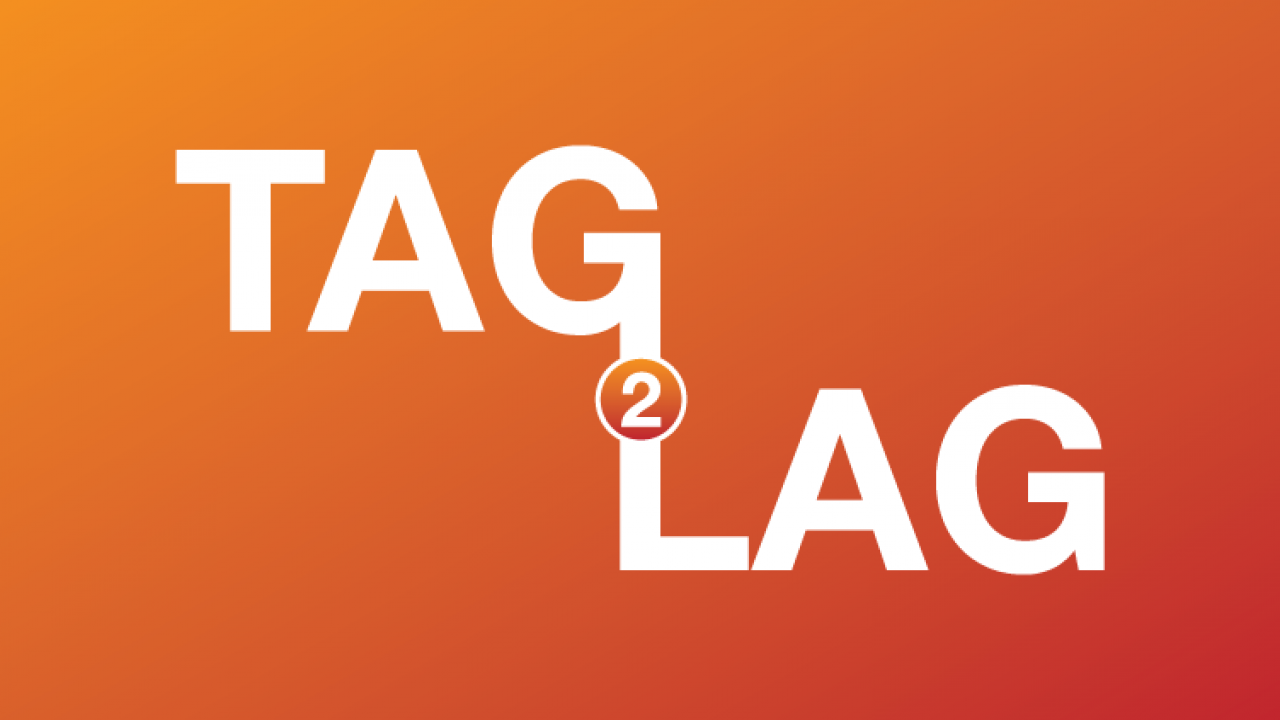How To Play Lag Poker
LAG Poker – The Dream Style?
Before even thinking about trying to learn how to play as a LAG, you need to be a winning poker player while playing a basic game. Moreover, you need to be a profitable TAG player; otherwise, you won’t have much success playing as a LAG. A LAG player has a solid game, understand situations and circumstances, he or she can adjust fast and are. If the LAG is playing for big money, raising and re-raising you, call to limit the damage Out-loose them. If your opponent is playing for little pots, try and force them into playing for bigger stakes. A LAG style of play is not very simple to explain but it becomes more and more easier to implement once you get used to it. You can find my complete guide to transitioning from a TAG (tight and aggressive), to a LAG (loose and aggressive play style right here. Play Small Stakes Sit and Gos.
Playing lots of pots is the dream. It’s more fun, intellectually challenging and potentially profitable too. It’s what most developing poker players aspire to. They want to play LAG poker well. This article will take a close look at what loose aggressive poker is, what it takes to play the style well, the pitfalls and what you can do to become a winning LAG.
Beginner Texas Hold’em Question
What is a LAG in poker?
A “LAG” is a loose aggressive poker player. The most common trait of a LAG is seemingly playing lots of hands and playing them aggressively. A LAG is therefore the polar opposite of a nit – someone who is playing tight and often passively.
How Many Hands to Play?
A loose aggressive poker player has their own ideas about what hands they like, what hands are profitable and from where. The key to being a good LAG is to identify what hands YOU play well i.e. don’t overplay and be comfortable playing pre and post-flop. It’s fine to have your own recall to draw on but I recommend using proper poker software to analyse your game. Your personal memory is biased and not as reliable as data.
When it comes to the actual % of hands you are looking to play, it ought to vary based on the table composition. With other aggressive poker players to your left, it would be wise to counter that by playing a little tighter when out of position. Conversely, you can open raise wider on a tight table. Check out the opening range charts below for generic guidelines for opening hand ranges for a LAG poker player at full ring cash table (100 big blinds or deeper).
Early Position Opening Range
A LAG can play up to 26% of hands from early position.

Middle Position Opening Range
A LAG might open raise around 33-35% of hands from middle position.
Late Position Opening Range
A LAG will play well over 58% of hands from late position. The graph above is actually a little conservative as many LAGS will play hands like Q-7 suited.
Tips on How to Play LAG Poker Well
First things first. Before you even consider adopting a loose aggressive poker style, you need to be profitable already. You don’t run before you can walk do you? Otherwise you will keep falling. This is true for profitable poker.
Master a simpler style before trying the complex. In other words, ensure you are profitable playing a tight aggressive (TAG) style of poker first. Once you’ve got 6 + months of profits behind you and lots of hands, then consider the looser style.
Tip 1:Mental Toughness
A LAG style is inherently more volatile and likely to result in a few more swings than a tighter brand of poker. This means you need to be mentally tough to take the bad times. You need to have faith in your system and style and keep with it, provided you are playing well. Don’t beat yourself up if you lose money in a spot where you wouldn’t as a TAG and don’t be results orientated in the short term either.
Tip 2: Abuse the Tighter Games
Playing loose aggressive poker means winning lots of nothing pots. Steal the blinds all day if the tight regulars won’t fight back. It may seem a little boring but trust me, over time, it’s worth it and will help you win rate. You are also creating the table image you are wild. This will help you get paid off in the future.
Tip 3: Don’t Become Spewy
Playing this style will sometimes put you in spots you don’t want to be in. Facing a 3 bet, you may have to call more hands than you would in the past. There is a fine line between an ok call and a bad, spewy call. Remember, not every LAG is a good LAG. If you want to be a good LAG, stay on the well-timed aggressive side of the spectrum, not the spewy side.
Tip 4: Get Pots Heads Up
LAG poker works best when you are one on one. There’s no question that it is easier to win pots heads up than it is with more opponents. It’s common sense. Luckily there are lots of cash games where players are just playing ABC solid poker. This is perfect for a good LAG poker player to exploit as you can iso-raise and get players one on one.
Tip 5: Adapt to the Table
A good LAG cash game player knows when to make adjustments and modify how they play. Fighting fire with fire is rarely the optimal strategy. If you are getting 3 bet regularly from cut-off against the button, 4 bet or play a little tighter. Don’t do the same thing and expect different results like lots of players are. Adjust and adapt to the table and situation.
How To Play Poker Cards
Tip 6: Be Aware of Your Image

Your table image is critical when it comes to decision making on later rounds. Your opponent’s propensity to bluff or hero call you is likely to be based on your table image. This is what you have conveyed to your table, for that session. Be aware of it and take it into account when making key decisions. You may have played 30/28 yesterday but today you may be playing 22/15 and appear very solid. This difference in perception could be massive to an opponent.
What are the Pitfalls of Being a LAG?
You play poker to win. You’re reading this article because you want to be a good LAG poker player or you want to learn more about the LAG poker style. It wouldn’t be fair to only show you the good side of this style. There are many, many bad LAG players online and in casinos. These are the players that think they have poker solved, but are long term losers. Worse than that, they are the worst type of loser, deluded and likely to be big losers. The list below highlights the common pitfalls to avoid.
Pitfall 1: Levelling Yourself
This happens to so many poker players. They think that just because they are playing more pots, they must make a hero call with second pair. Remember, you’re playing your game but so is the rest of the table. The reality is that most players, particularly at low stakes, are not adjusting enough and unlikely to be running a massive bluff. Certainly not as often as you may think.
Pitfall 2: Continuation Betting Multi-way Too Much
Wonders will never cease, when I see LAG players trying to push through continuation bets multiway like 80% of the time. This is just throwing money away. Remember, more people in the pot equates to more chance of someone having strong enough to continue. It’s the law of probability. This is not 30 years ago when a continuation bet would probably get a top pair weak kicker to fold. Don’t waste money needlessly continuation betting unfavourable boards multiway.
Pitfall 3 :Not Respecting Position Enough
How To Play Lag Poker Games
Position is and will always be one of, if not the most important part of Texas Hold’em. You can open your ranges a bit and play more hands but you need to give position the respect it deserves. This might mean folding A-10 off suit to a 3 bet out of position, or folding a suited ace from under the gun at a tough table. The concept is clear and the results will bore out truth.
Pitfall 4: Ego, Unable to Move Tables
You need to leave your ego behind. A good LAG knows when the table is right and when it isn’t. A table of short stackers with other good LAGs is no good for you. You need the threat of post flop aggression and deep stacks to thrive. Be humble and recognise when you need to leave the table and find a profitable one.
Pitfall 5: Impatience
There are different types of patience. Setting up a massive bluff or getting the big pay off after stealing pots relentlessly is a form of patience. You can ill afford to be impatient as a LAG player. You’re pushing small edges and playing the long game.
Summary on LAG Poker

This article has concentrated on the good and bad sides of LAG poker. What it is to be a LAG, what skills you need, where you need to be and the things you need to avoid to pull it off. To sum up:
- Be a winner first, with months and data behind you
- Develop mental toughness to deal with swings
- Play in tighter games & get pots heads up as often as possible
- Adapt to the table and be aware of your table image, from session to session
- Be patient and have faith in your game
I hope you found this article useful. If you are keen to learn more and develop into a good LAG in 2021, we’d love to hear from you and help you. We offer hand history reviews, coaching by email and Skype coaching. Just visit our contact us page and we will get back to you ASAP.
Don’t forget to bookmark us and return in the future. We publish new content regularly. All you need to do is “press CTRL + D”.
Commonly Used In Acronym Format Throughout The Poker World, But What Do LAG and TAG Play Involve?
You will often see LAG and TAG used to describe poker strategy styles on forums and in articles throughout the poker world. These actually describe two of the most profitable playing styles: LAG = ‘Loose Aggressive’ and TAG = ‘Tight Aggressive’.
This article describes a system which enables you to put opponents into different categories of poker playing style based on their observed behavior. Once you do this it is easy to adjust your own play according to their style – to maximize your profits.
Planet Mark's Rec: If you are having trouble assessing opponents, why not let a poker tool do the hard work for you! Check out our Best Poker Tools section for more!
The starting point for assessing playing styles is to identify the two basic categories on which we rate players. The first scale describes the amount of hands played and goes from extremely loose (plays almost every hand) to extremely tight (premium hands only). The second concerns whether those hands are played with bets and raises, or with checks and calls. This goes from extremely passive (calls) to extremely aggressive (bets and raises). These can be made into a graph such as the following:
Next we can look at how a player with each of the styles identified in the graph might approach the game:
- Tight-Passive: This player only plays solid starting hands from good position, however they will rarely bet and raise without the stone-cold nuts – allowing observant opponents to get away cheaply. Tight-passive players are unlikely to be winners, though their losses will be small.
- Tight-Aggressive: This is the TAG Player from the introduction. Plays only solid starting hands and plays them positively and aggressively. An experienced Tight-Aggressive player is difficult to beat. This is one of the most profitable styles of poker.
- Loose-Passive: Playing too many hands and playing them by calling rather than raising is asking to have your money taken in poker. This style is often employed by players who are new to the game, and is an expensive way to find out that this style is extremely bad poker.
- Loose-Aggressive: This player plays a lot of starting hands and plays them very aggressively – especially while the bets are small. While not all hands played are profitable, this type of player will often get paid-off on big hands – since they raise so often those aces are nicely disguised.

$16 Per Hour Within 4-Weeks With The SNG Planet Free Course: Sign-up for the $16 Per Hour SNG Blueprint today, I'll take you from novice / intermediate level to being able to crush 1-table tournaments for at least $16 and hour over 4 weekly e-mailed installments. Feedback for this course has been excellent - Find out more in our $16 Per Hour SNG Blueprint Preview Page now!
Finally we can look at how to adjust your own style to beat the playing styles of individual opponents.
- When playing a pot against a Tight-Passive opponent: It is difficult to win a big pot against this type of player. Instead you can easily pick up small pots with bets when they show weakness. When a tight-passive opponent bets and raises strongly you need to exit the hand – they are unlikely to do this without the nuts.
- When playing a pot against a Tight-Aggressive opponent: Here you need a strong hand to continue, calling bets is not advisable – as you are likely to be faced with an even bigger bet on the next betting round. These are the toughest opponents to play against – however their aggressive tendencies can be used to help you build a big pot when you have a monster hand.
- When playing a pot against a Loose-Passive opponent: Rarely bluff this player, they are likely to call with some very weak holdings. You make the majority of your profit against this player by value betting – that is to say when you have a hand you must extract the most profit possible against a loose-passive opponent.
- When playing a pot against a Loose-Aggressive Opponent: Never wait for the nuts against a LAG opponent – your chips will be slowly eaten away while you wait. Instead play solid hands from position and value bet with lesser holdings than you would against other players. Let the loose aggressive player drive the betting to build a big pot when you hit an unlikely nut hand.
$16 Per Hour Within 4-Weeks With The SNG Planet Free Course: Sign-up for the $16 Per Hour SNG Blueprint today, I'll take you from novice / intermediate level to being able to crush 1-table tournaments for at least $16 and hour over 4 weekly e-mailed installments. Feedback for this course has been excellent - Find out more in our $16 Per Hour SNG Blueprint Preview Page now!
Further Reading For Players Looking To Exploit The Weakest Games:
10 Best Beginners Poker Tournaments, Lists a diverse selection of poker tournaments which should be profitable for the thinking beginner.
Knockout Bounty Tournaments, These place a 'bounty' on the head of every player who enters, which is awarded to whoever knocks them out. Not only are they entertaining - they attract many more recreational players than regular tournaments... again meaning bigger potential profit for thinking players!
PLO and PLO8 Tournaments, Well, holdem is far from the only game, you would be surprised how many Omaha tournaments are now running - find out more in our Omaha tournaments guide.